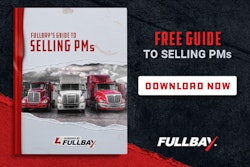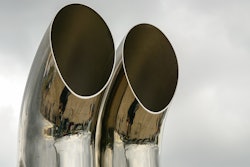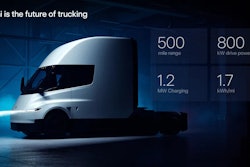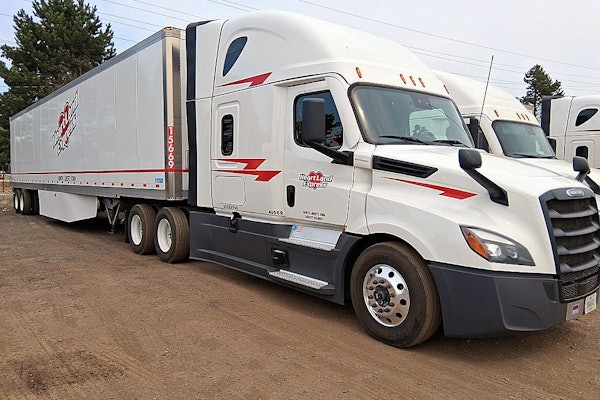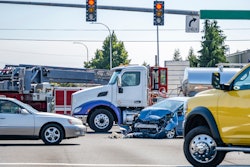The automotive industry has a great track record of market failures cast by the roadside. There is almost a love affair with failures: The Tucker Torpedo, the Edsel, the DeLorean, the Corvair, the Pinto, the Aztek, the Avanti, etc.
These cars became so infamous that they rose to become industry icons. Each has its own intriguing story to capture our attention. Owners of these vehicles keep them alive, showing up at car shows where they are guaranteed to attract attention. These vehicles are an endless source of commentary on social media. They are often referred to as case studies by industrial designers, business majors, lawyers, marketing researchers, think tanks, and more. Some were brilliant but still failed for different reasons.
Everyone has enough knowledge to formulate a top 10 list of automotive failures.
Is there something similar in the trucking industry? I’ve worked with some simply awesome industrial designers over the years. The public never sees a fraction of the imaginative ideas that get put on the wall or carved out of clay in OEM studios. I even participated in a design crowd-sourcing event once where an OEM pursued public submissions of future truck designs with a minimal number of ground rules. It was quite eye-opening going through hundreds of concepts.
In the truck OEM world, there is something uniquely different about capital budgeting for next-generation products. My gut tells me that truck OEMs are probably much more risk-averse than their automotive counterparts. Truck OEMs deal with much smaller potential market volumes. Where Ford might sell more than 100,000 Mustangs in a year, a truck OEM might be lucky to garner a net total of 100,000 truck orders a year. And those orders cater to a market that demands a massive number of choices such that fewer than a few thousand vehicles with a similar spec a year may be made.
Pursuing a capital budget for a next-generation truck is like the proverbial "getting blood from a stone." Corporate management grinds through ideas of where to spend money like shredders eat documents. Everyone has ideas. Very few get support. Fewer yet get funded. Fewer yet succeed at making it into production.
The process for making a new bumper or hood can take a year of research and chasing approvals. Then tooling lead times come into play on the scale of months to years. All that time, expenses are accruing, so funding and personnel need to be constantly fought for against all the other needy mouths in the organization. Keeping your pet project funded can be a cutthroat proposition.
Now think about what’s involved in making an entire new truck.
The nature of the truck industry is that it is never "just one new truck." In reality, any new truck is actually a whole new truck platform to launch all the permutations the industry expects: set-back front axles, set-forward front axles, day cabs, sleeper cabs in multiple lengths and roof heights, high-horsepower, economical, aerodynamic, etc.
What starts as one new truck project becomes a mission to build a new truck platform—a true new product line. Scope growth is inevitable. The "what-abouts" come out of the woodwork. Advocates for every possible option choice press their cases with stories about the McKenzie Fleet in Michigan needing a PTO and high-horsepower engine, the Flanders Fleet in New York City needing snowplow capability, the Doherty Fleet in Florida wanting to haul double 53' trailers, etc.
There are literally millions of vehicle permutations offered by North American OEMs. Every one of those has to be researched, designed, analyzed, tested, justified, rationalized, and negotiated. One product line developed by a publicly traded truck OEM in the early 2000s exceeded $1 billion in early program cost projections. I’m not sure where the true final number ended up, but I expect it was closer to $2 billion over probably 10 years of development. That was a lot of blood out of the stones of the corporate managers.
The process of spending that amount of money at any OEM is frighteningly pedantic. Armies of accounting people look through the microscope at every line item, making sure every penny makes sense. Marketing people are stressed to nearly guarantee a specific number of sales will come from the options they support. Engineers are scrutinized to ensure they have shaved all wasteful costs from the designs. Tooling engineers and purchasers are pushed to the limit to expedite schedules and minimize costs. Suppliers are hounded to meet schedules while also constantly reducing costs.
I expect the automotive companies have their nightmares as well, but they seem more capable of birthing memorable vehicle failures than I’ve seen from truck OEMs.
Truck OEMs just don’t seem to launch failures. Okay, they have launched disappointments. But generally, nearly all those models ultimately were salvaged with midlife product updates. And many of them have had long product lives and achieved sufficient build volumes to be considered acceptable.
I can think of only a handful of major missteps. A particular misguided engine technology choice in 2010 saw the loss of considerable market share for one OEM. Two extremely aerodynamic cab-overs introduced at two OEMs in the 1990s just had bad timing as regulations changed and the market went all in on trucks with hoods. A few start-ups have had some obvious failures, but, come on, those are start-ups. Not the same bar the established OEMs have to meet. No, the slate is not completely clean for truck OEMs, but it is pretty empty compared to automakers.
Here is your assignment. At the next major truck conference, meet up with your network of industry associates over lunch. Do your own survey. Ask them what major truck OEM models were considered failures. Then ask them what automotive models were failures. See which has more. My money is on the car makers.

